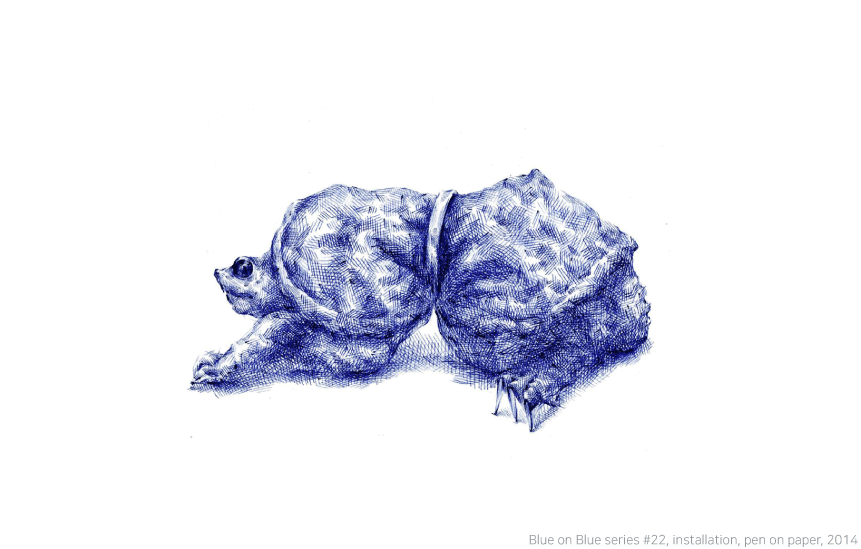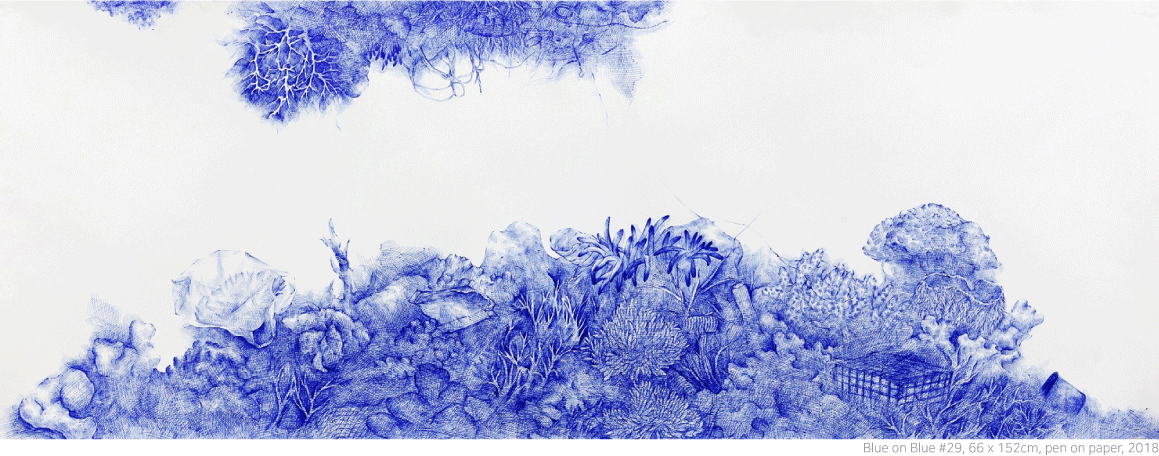artworks, artists and exclusive offers. Sign up now
[SHOWS] JooLee Kang's Solo Exhibition 'Turn Blue' @KAIST Research & Art Gallery
OCTOBER 23, 2019
JooLee Kang's Solo Exhibition 'Turn Blue'
강주리 개인전 'TURN BLUE'
KAIST 경영대학 Supex 경영관2F l KAIST Research&Art Gallery
2019. 10. 24 - 12.12
Turn Blue
<Turn Blue> is a solo exhibition by artist JooLee Kang, who has been revealing the relationship between humanity and nature through detailed pen drawings and installations. Kang goes beyond simply recreating the mainstream issues of the present day such as humanity's rule over nature, taking a neutral view that comes from a broader perspective and exploring the close symbiotic relationship between humanity and nature. This artistic universe began with observations of the ecosystem from modern society, and developed towards its current focus on the marine ecosystem in 2014. This exhibition presents this process of continuation with subtle changes from the beginning to the present, through the previous Still Life series, the Blue on Blue series, and the new Man-Made series consisting of drawings and plastic installations.
The exhibition title <Turn Blue> has a dual meaning. The literal meaning is to change in color, but it can also refer to turning pale with shock or death, connoting the futility of life. The pieces in this exhibition present the marine ecosystem as well as traces of human civilization such as earthenware, plates, and utensils in shades of blue. The living organisms in the images feel unfamiliar and imaginary but are in fact recreations of real living organisms informed by meticulous research. Thus, the flora and fauna are drawn to a high level of detail, like what you would find in illustrated guides. Objects such as plates made by humans are things that we ascribe value to and possess, showing an intent to use nature and coexist with it. These objects are presented as independent objects are presented as independent objects at times, and in a harmonious arrangement on a table at times. All of these have the appearance on a table at times. All of these have the appearance of "artifacts from ship full of treasures sunken deep in the ocean: to borrow the artist's expression. Just like the ambivalence evoked by the imagery of the ship holding treasures, they feel both highly realistic and surreal at the same time.
The images created by Kang are metaphor for the close bond between humanity and nature, which are often thought of as being in diametrical opposition, or a relationship of subordination, but are in face woven together like a single piece of fabric. While the act of bringing nature into human life and using it stems from human selfishness, it can also be seen as an inevitable choice in the process of evolution. Such is the close bond between nature and humanity, humanity and nature. The artist also addresses the negative consequences of humanity's use of nature, with life itself coming under threat and humanity facing the severe outcomes of its own greed. The artist looks at the symbiotic relationship between humanity and nature through the eyes of an observer who takes multiple perspectives, not only adhering to one side of the issue.
The artist's theme and natural stance also show through in the new installation piece presented for the first time in this exhibition. The installation piece in the Man-made series presents disposable plastic bottles placed on top of drawings or hanging in the air in juxtaposition with the drawings.These water bottles, which are commonly found in our day to day lives, have been polished and reinforced for this piece.The plastic material that these bottles are made of is a symbol of an object created inevitably within the symbiotic relationship between humanity and nature. By placing these plastic bottles directly on the blue drawings, the artist makes it impossible to see the images clearly. On the other hand, the drawings give the plastic bottles a blueish hue. It seems to reflect how we cannot view nature obscured: as we use nature, it becomes obscured by our interventions. Thus, humanity and nature can only exist in an interactive relationship. By placing the symbiotic relationship between humanity and nature under a broader lens, Kang's artistic worldview brings the viewer to a deeper level of insight.

ARTWORKS



| Prev | [SHOWS] 'ILLUSION: ELUSION' with permanent collection @ Seongnam Cube Art Museum |
|---|---|
| Next | [BIENNALE] 2019 CHEONGJU CRAFT BIENNALE |
| List |